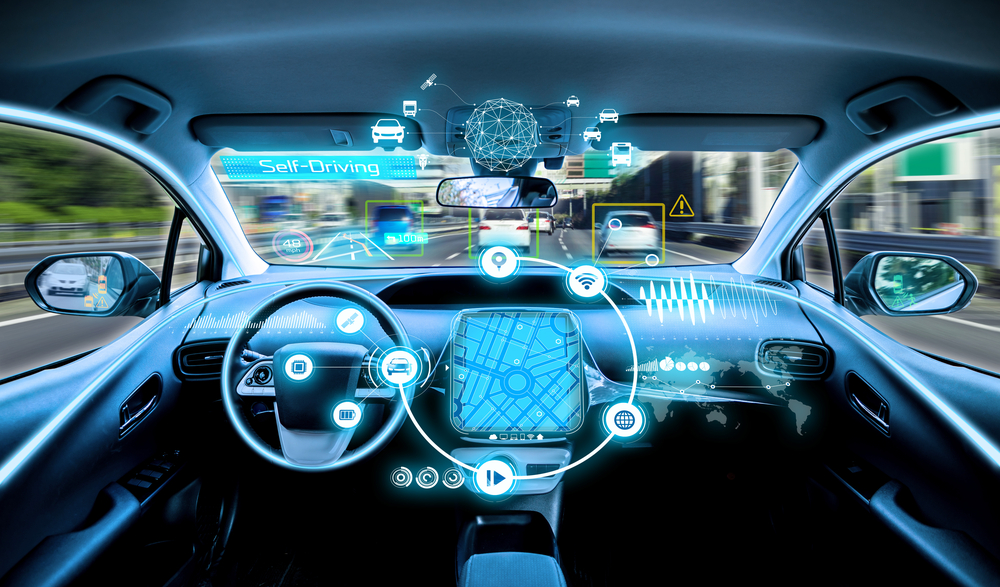How Automated Trucking Will Impact the U.S. Workforce and Economy [Report]
via Trucker.com, March 29, 2019
PORTLAND, Ore. — Daimler Trucks, a division in the Daimler Group, the world’s largest manufacturer of heavy and medium trucks, and Torc Robotics, a pioneer in autonomous driving solutions, are joining forces in a one-of-a-kind combination to commercialize highly automated trucks (SAE Level 4) on U.S. roads.
Going beyond an OEM/supplier relationship, the companies signed an agreement Friday for Daimler AG’s subsidiary Daimler Trucks and Buses Holding Inc., to acquire a majority stake in Torc Robotics for an undisclosed sum. Closing of the acquisition is subject to approval from U.S. authorities.
Michael Fleming, CEO of Torc Robotics, Martin Daum, member of the board of management Daimler AG, responsible for trucks and buses, and Roger Nielsen, CEO of Daimler Trucks North America, announced the strategic move at Torc headquarters in Blacksburg, Virginia.
“With the ever-rising demand for road transportation, not the least through e-commerce, there is a strong business case for self-driving trucks in the U.S. market and I believe the fastest path to commercialization for self-driving trucks is in partnership with Daimler Trucks, the OEM market leader,” Fleming said. “This move is in line with our mission of saving lives and represents another major milestone for Torc since crossing the finish line in the DARPA Urban Challenge 12 years ago.”
“Bringing Torc Robotics within the Daimler Trucks family creates a unique and powerful team of innovators to put highly automated trucks on the road. Daimler Trucks and Torc Robotics complement each other perfectly in terms of resources, expertise, and skill sets. We are forming the ideal combination between Torc’s expertise on agile software development and our experience in delivering reliable and safe truck hardware,” Daum said. “Together, we will provide a sustainable way for our customers to meet the ever-growing freight demand and benefit both the economy and society,” he said.
“Torc is not a start-up, but one of the world’s most experienced companies for vehicle automation. Torc takes a practical approach to commercialization and offers advanced, road-ready technology, plus years of experience in heavy vehicles. Torc’s Level 4 system has been shown to operate well for both urban and highway driving in rain, snow, fog and sunshine,” Neilsen said.
As part of the overall agreements, the Torc team will work closely with Daimler Trucks’ developers, particularly with the research and development team of Daimler Trucks North America in Portland. Torc will continue to develop its Asimov self-driving software and testing at its Blacksburg facility. At the same time, DTNA will focus on further evolving automated driving technology and vehicle integration for heavy-duty trucks at its Automated Truck Research & Development Center in Portland.
The DTNA team is working on a truck chassis perfectly suited for automated driving, particularly the redundancy of systems needed to provide the maximum level of reliability and safety, Daum said.
Under the agreement, Torc will remain a separate entity retaining its name, team, existing customers, and facilities in Blacksburg. The partnership with Daimler Trucks will enable Torc to expand significantly its team, engage into the trucking market and service its growing customer base in other markets.
In 2015, Daimler’s Freightliner Inspiration Truck obtained the first-ever road license for a partially automated commercial vehicle and the world premiere of the Mercedes-Benz Actros with Highway Pilot took place on public roads.
With Active Drive Assist and Detroit Assurance 5.0 with Active Lane Assist (Freightliner Cascadia), Neilsen noted that Daimler Trucks is the first to bring partially automated driving features (SAE level 2) into series production. The new system can independently brake, accelerate and steer. Unlike systems that only work above a certain speed, Active Drive Assist / Detroit Assurance 5.0 make partially automated driving possible in all speed ranges for the driver, also another first in a series production truck. This revolutionary active lateral and longitudinal assistance package is powered by a new state-of-the art radar and camera fusion system.
